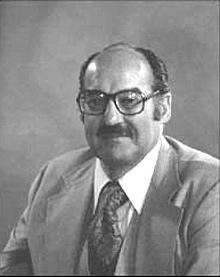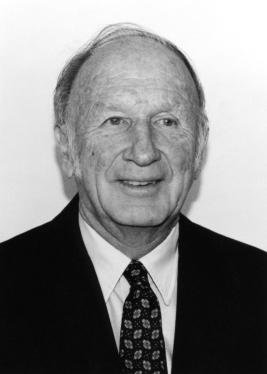Early history of global atmospheric and climate modeling at NCAR
Enjoy this excerpt from Warren's autobiography, "Odyssey in Climate Modeling, Global Warming, and Advising Five Presidents"
"I arrived in Boulder in late August 1963 and I moved into an apartment. During my first days at NCAR, I met with Walt Roberts, the founder and President of the University Corporation of Atmospheric Research (UCAR), the organization that manages NCAR. He told me that as a national center, I should spend roughly half of my time on an activity that was appropriate for a center and the other half on what was of interest to me.
I had been formally hired by Aksel Winn-Nielsen, but he left suddenly in the late summer of 1963 to take a position of Chair for the Department of Meteorology and Oceanography at the University of Michigan. My immediate boss became Phil Thompson, who had a very relaxed management style. He felt his main responsibility was to hire the best people and give them the tools to do good science.
In those days, I met and enjoyed my interactions with Akira Kasahara, who became my closest collaborator in the early part of my career at NCAR. Akira was a senior scientist and someone you could speak to about anything in atmospheric modeling and dynamics. He came from the famous University of Tokyo program that has produced pioneers in the field of theoretical meteorology. In addition, he had done atmospheric modeling at several research universities and institutions before coming to NCAR. I regard him as a highly principled scientist and one of early leaders of the atmospheric modeling research at NCAR.
One day in May 1964, Akira and I had lunch with Phil Thompson. We laid out a strategy to build a new atmospheric computer model. He was enthusiastic and encouraged us to get started. In fact, a decision was made to purchase a Control Data Corporation 3600 Computer that would allow the solving of the model calculations.
In the early days, a great deal of attention was devoted to testing various numerical schemes. Kasahara, David Houghton, and David Williamson led the way in experimentation of the search for more accurate and novel mathematical methods. Clearly, Phil Thompson felt that many of us were hired to do “big” science such as build computer models, even though there was never an explicit statement to do so, before that lunch.

Joe Smagorinsky There were already several other groups involved in modeling the atmosphere from the perspective of weather and climate. The most notable was the group headed by Joe Smagorinsky1 at the NOAA Geophysical Fluid Dynamics Laboratory (GFDL) that was in Washington, DC. Later it moved to Princeton, New Jersey. A much smaller but effective group was formed at the University of California in Los Angeles (UCLA). The leaders of the UCLA group were Yale Mintz and Akiro Arakawa. The third group was really only one person, Chuck Leith, who was at the Department of Energy (DOE) Lawrence Livermore National Laboratory (LLNL).
Chuck Leith was a first rate physicist who had a broad interest in fluid dynamics and the use of computers. His heroic effort of building single handedly a comprehensive atmospheric model impressed many people in the field including me. He actually demonstrated his pioneering work by making the world’s first computer animations of atmospheric simulations. In the 1960s, these early models were called general circulation models (GCMs) because they simulated the global or hemispheric atmosphere circulation patterns. There had been earlier pioneering work by Norman Phillips, at the Institute for Advance Study, demonstrating that a simple model captured the basic elements of the atmospheric general circulation.
Jule Charney. In the summer of 1964, NCAR management asked me to become involved in an urgent special project headed up by Jule Charney of the Massachusetts Institute of Technology (MIT). The other scientists involved were Yale Mintz (UCLA), Akira Kasahara, and Ed Lorenz (MIT). We all met at NCAR in the summer to explore the questions related to how far in advance individual weather systems could be forecasted.
Of course, we knew in a practical sense that one of the limiting factors was the data that was entered into the models. This would limit the length of a useful computer weather forecast. In this limited study, we assumed that the input data was perfect. Given that assumption, we wanted to know if there was an ultimate forecasting limit. Was it a few days or a few weeks? This information was crucial to the development of a new international program that would help realize that theoretical limit. Governments wanted to know what the expected improvements in weather forecasting would be if they invested in better data observing system. Of course, we certainly did not want to promise beyond the possibilities. The observational and modeling programs were in the early stage of development. The overall program was called the Global Atmospheric Research Program (GARP).
The famous atmospheric dynamist, George Platzman, from the University of Chicago was involved in the project by telephone. Several atmospheric models were considered for the weather prediction experiments. The Chuck Leith model and the Geophysical Fluid Dynamics Laboratory (GFDL) models were considered too dissipative concerning the large-scale weather system eddies and the NCAR model was not yet developed enough to be used. Charney felt the first model to be tested was the UCLA model built by Yale Mintz and Akio Arakawa. It would provide the most useful estimates of forecast capability. Even though this model was not fully documented in the literature, it appeared that the large-scale weather systems seemed to be quite energetic and realistic.

Lorenz introduced a novel method of estimating the upper limit of prediction. He proposed computing the difference between atmospheric patterns with increasing days of separation. At some point, the pattern would be completely random and the root mean error would not grow with time. This thinking took place well before a full theory of chaos was developed.
Intriguingly, about the same time Lorenz was credited with articulation of the “Butterfly Effect"2, where a flap of a butterfly’s wings in say China, could later lead to a tornado in the mid-west United States. Lorenz’s earlier experiments on small changes in the model “initial conditions”, helped lead to a better understanding of limits on weather forecasts. It has also helped the science community understand aspects of the chaos theory, which has been applied to many other fields of science. Charney asked Mintz and me to fly to Los Angles over the weekend and use the UCLA model to do the computations on the (continued, next page)
1 Smagorinsky was able to put together a strong and extremely capable modeling staff with some of the world’s most powerful computers. He had a strong personality, which served GFDL well in the early days of building mathematical models.
2 The "Butterfly Effect" is often ascribed to Lorenz in a presentation he gave in 1963 at the New York Academy of Sciences. Lorenz said: “One meteorologist remarked that if the theory were correct, one flap of a seagull's wings would be enough to alter the course of the weather forever.” Moreover, in another talk at the 1972 annual meeting of the American Association for the Advancement of Science in Washington, D.C. the sea gull became the butterfly. Lorenz defined a set of model equations that showed this effect. The Butterfly Effect is so popular that it was referred to in the popular movie Jurassic Park.